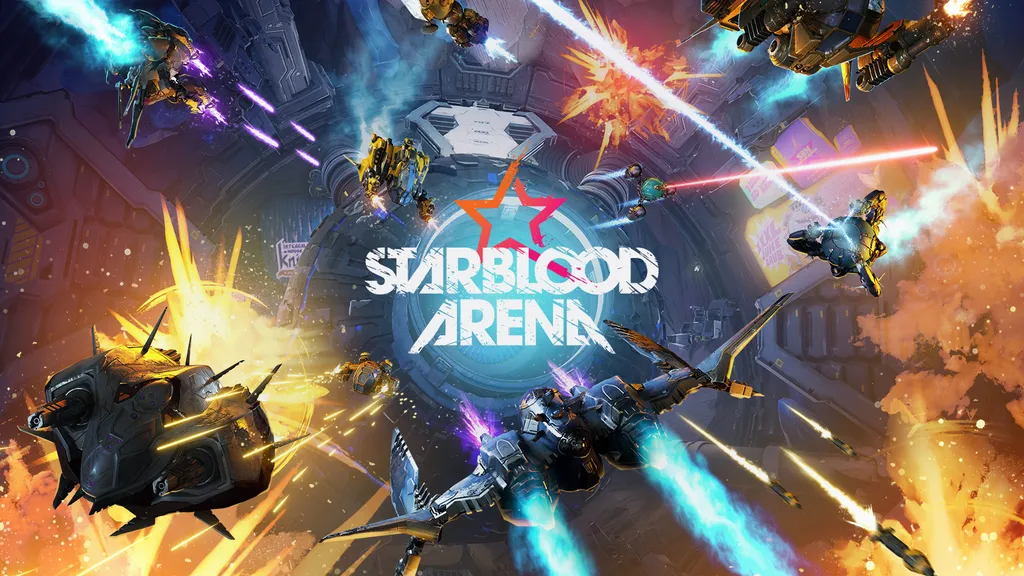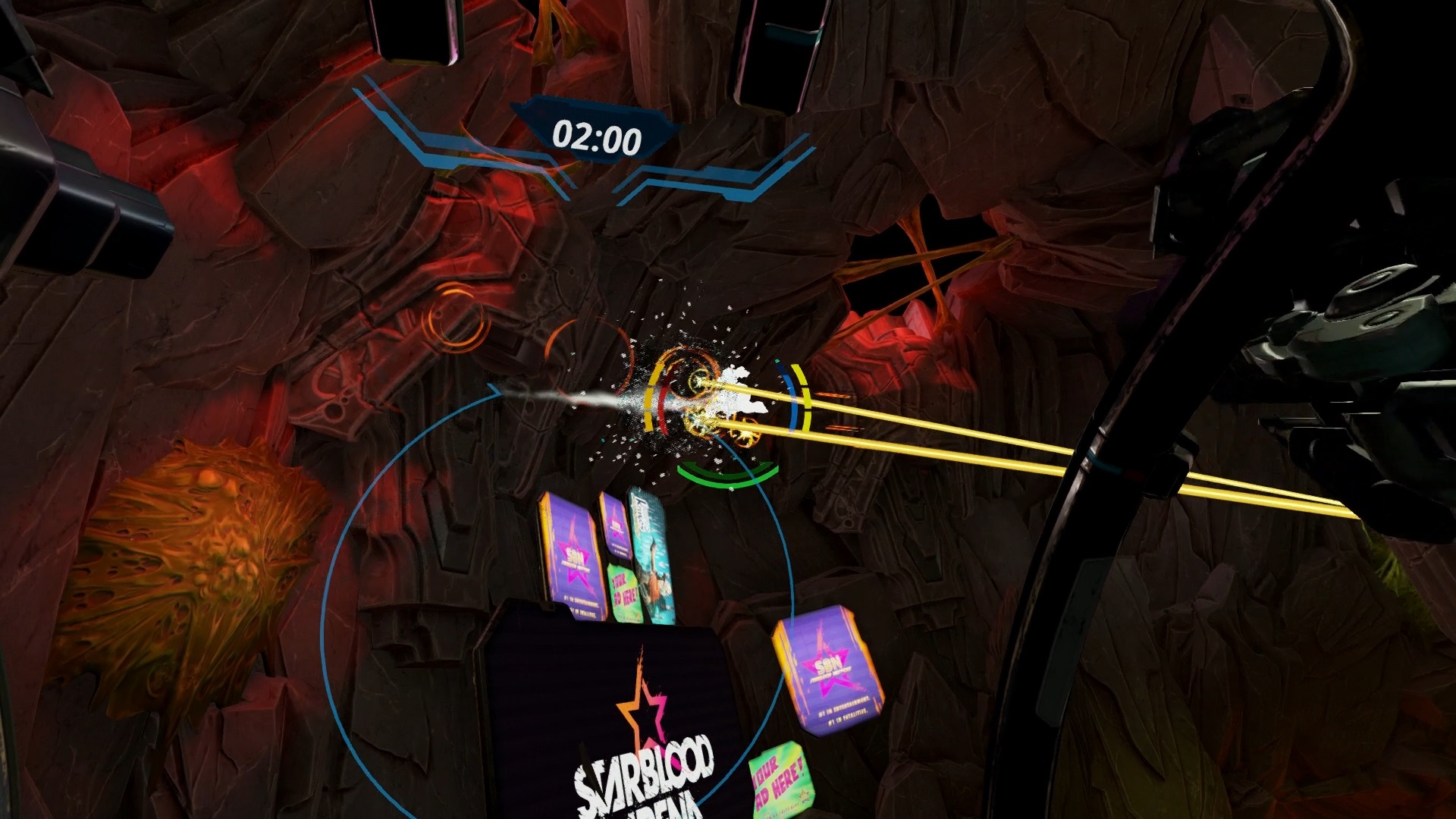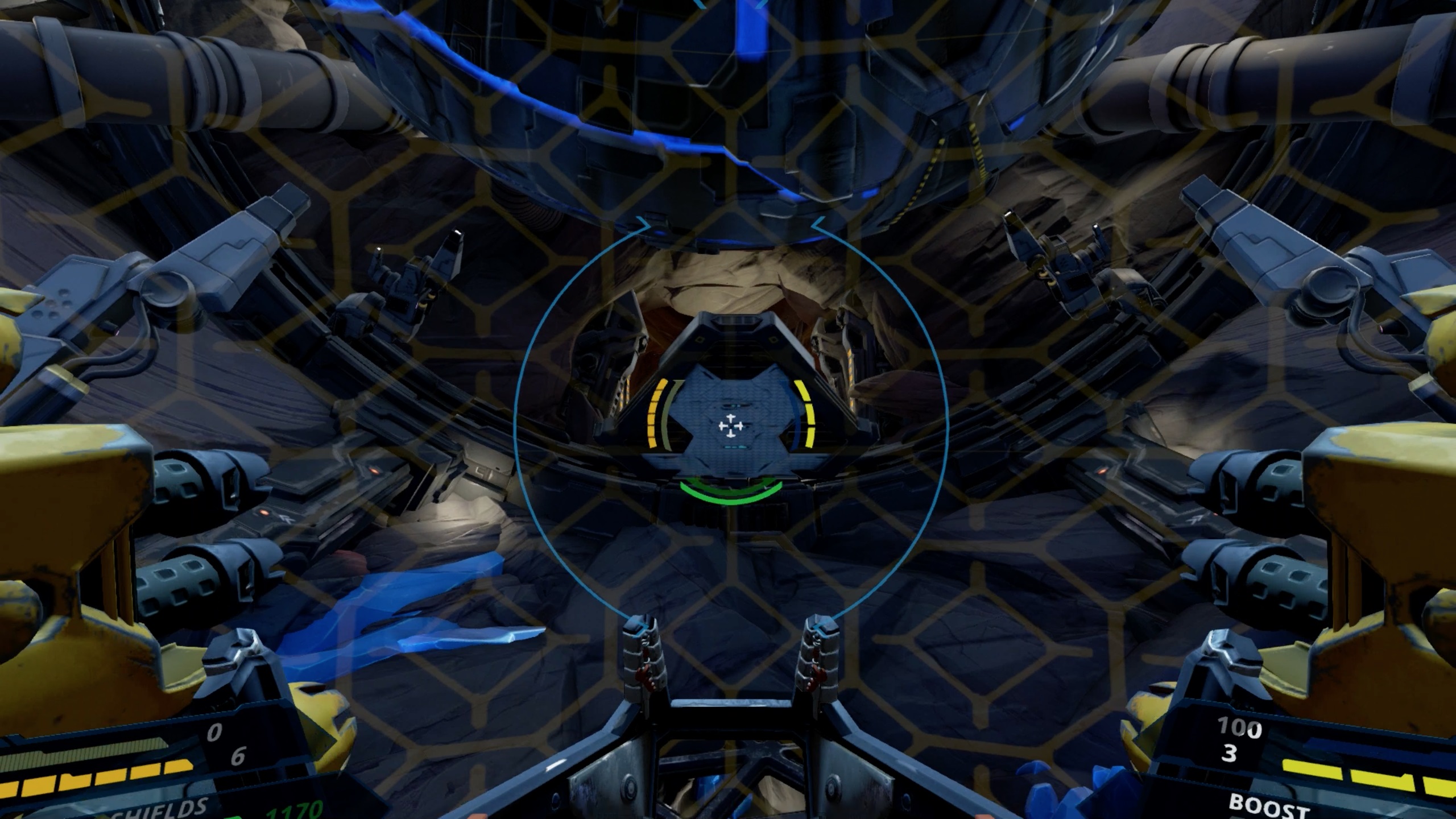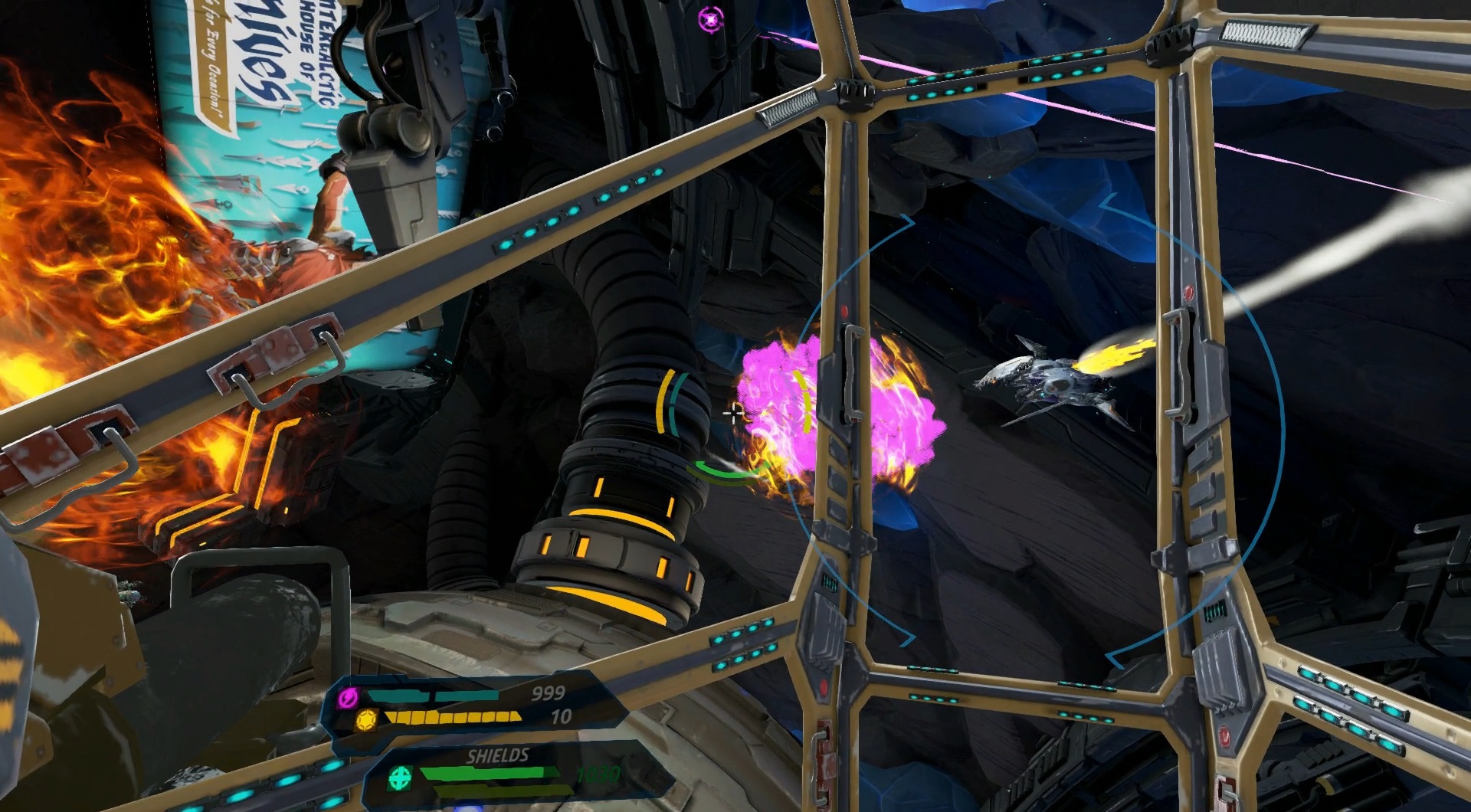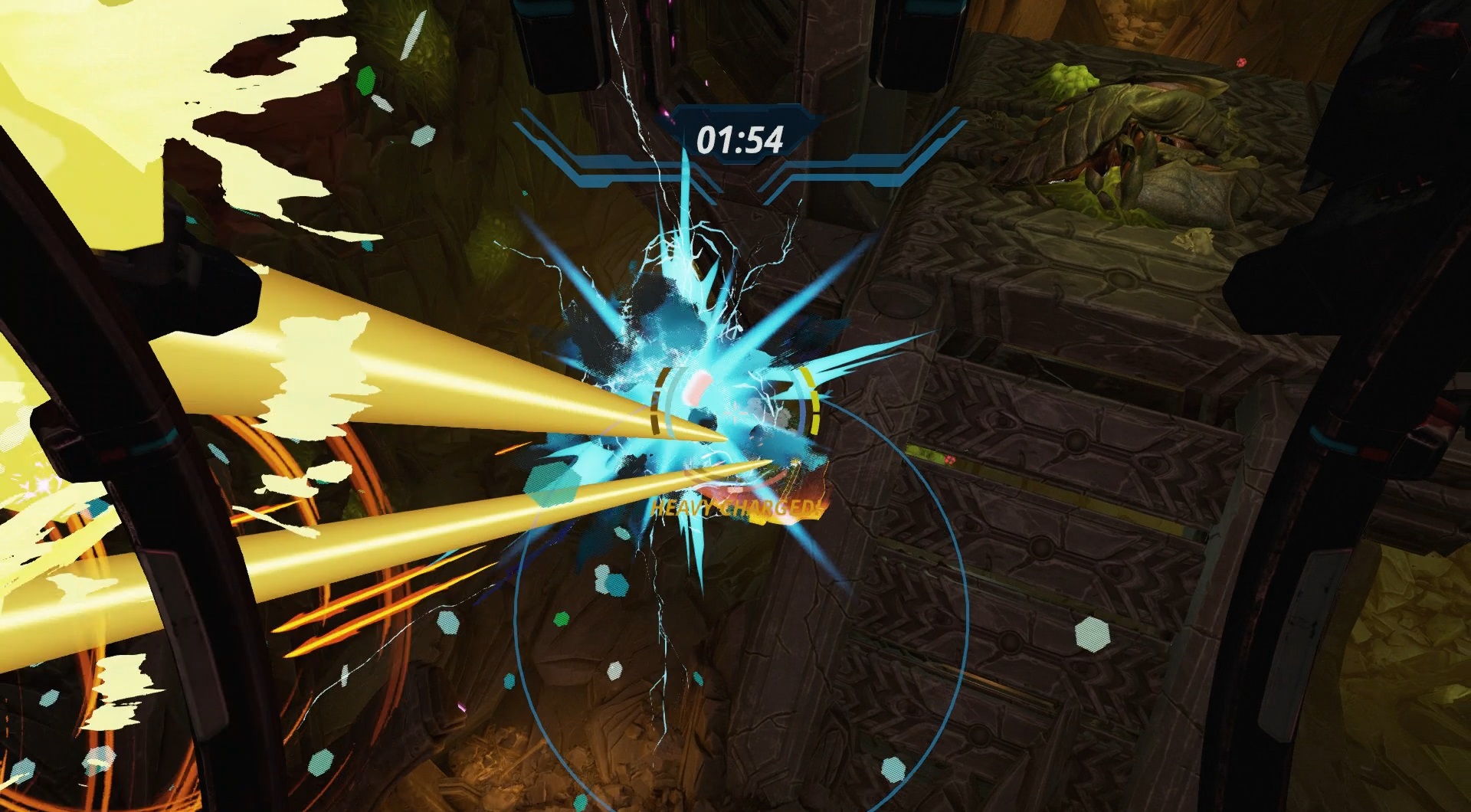There’s a decent chance that when you read the title of this article you were confused about what exactly a 6DOF mech shooter is. To explain simply, imagine all of the directions you can move your hand in the air. You can go forward, backward, left, right, up, and down — a total of six directions, not counting diagonally and other movements, or six degrees of freedom (6DOF). Most standard shooters, like Call of Duty or even Rigs, let you move forward, back, left, right, and only by jumping and down by crouching. Cockpit shooters usually don’t let you move backwards, at least not quickly, and you’re almost always thrusting forward, like in Eve: Valkyrie.
The best example for a modern 6DOF shooter would be something like Descent: Underground (which actually does have VR support). Nothing like that really exists on PlayStation VR (PSVR), at least not yet, until the release of StarBlood Arena on April 11th. StarBlood Arena is in development by Sony’s San Diego Studios and Whitemoon Dreams. It’s a fast-paced, frenetic, and intense 6DOF mech shooter with tons of customization, different classes to try, and game modes to enjoy. Earlier this month we visited Sony’s headquarters to demo upcoming PSVR titles — one of which was StarBlood Arena.
I got to play through a single round of Carnage, Starblood’s take on standard Deathmatch. The mech I chose had a focus on dealing damage with powerful rockets and lots of splash damage. With nine different characters to choose from, there’s plenty of diversity in the game right from the start.
The match started with each player in a different spawn point around the level (I was playing against other actual humans, one of which was UploadVR’s Editor-in-Chief, Tal Blevins) where we were free to move however we wanted. I could go forward, backward, left, and right using the thumbsticks, then increase or decrease my elevation using the L1 and R1 buttons. Since aiming was controlled via head movement, it was sort of like having a third analog stick. The control scheme is going to take some getting used to, but it felt a bit like a combination of Rigs and Eve: Valkyrie with a bit more freedom of movement.
It took me a minute or two to get the hang of everything, but before long I was blasting enemies out of the air with ease. I had a handful of different weapons I could toggle between using the DualShock 4’s face buttons, so it was easy to adapt to my situation. I’d open up my assault with a standard machine gun firing from a distance, then once their shields were down I’d finish them off with a barrage of rocket blasts. Any time an enemy was near a wall I focused on splash damage.
I only got to try this one character, but based on the descriptions and loadouts they all seem dramatically different. The character diversity isn’t as enormous as in a game like Overwatch, but it’s still a nice mixup when compared to other more traditional shooters. The sense of freedom and speed granted by the liberating 6DOF configuration gave StarBlood a unique feel that’s unlike anything else in VR right now — PSVR or otherwise.
When StarBlood Arena releases it won’t just be Carnage (deathmatch) multiplayer though. There will also be Team Carnage, Gridiron, which is a goal-based mode, similar to the matches in Rigs of the same name, and Invaders, which is a co-op wave-based survival mode. Multiplayer matches can be played privately and ranked. On top of all of that, each character has their own skirmish mode and you can engage in per-pilot tournaments.
All of the mechs (referred to as Battle Pods) are fully customizable as well with gear that can be unlocked through all of the multiplayer and single player game modes, including paint schemes, visual attachments, and gameplay-altering modifications.
StarBlood Arena releases exclusively for PSVR on April 11th for $39.99. For more information, make sure to watch the game’s trailer and our in-depth interview above. You can also find out more information on the game’s official website.

